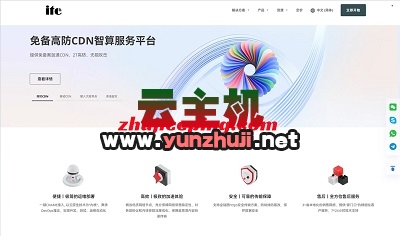Android在不使用数据库的情况下存储数据的方法
SharedPreferences是一种轻量级的键值对存储方式,适合存储一些简单的配置信息或少量的数据,它提供了一个简单的API来存储和检索原始数据类型(如字符串、整数、布尔值等)。
示例代码
// 获取SharedPreferences实例
SharedPreferences sharedPref = getSharedPreferences("MyPrefs", Context.MODE_PRIVATE);
SharedPreferences.Editor editor = sharedPref.edit();
// 保存数据
editor.putString("username", "JohnDoe");
editor.putInt("age", 30);
editor.putBoolean("isLoggedIn", true);
editor.apply(); // 或者使用 editor.commit();
// 读取数据
String username = sharedPref.getString("username", "DefaultUsername");
int age = sharedPref.getInt("age", 0);
boolean isLoggedIn = sharedPref.getBoolean("isLoggedIn", false); 单元表格:SharedPreferences操作对比
| 操作 | 方法调用 | 参数 | 备注 |
| 保存字符串 | putString(key, value) | “username”, “JohnDoe” | key为用户名,value为字符串值 |
| 保存整型 | putInt(key, value) | “age”, 30 | key为年龄,value为整数值 |
| 保存布尔型 | putBoolean(key, value) | “isLoggedIn”, true | key为登录状态,value为布尔值 |
| 读取字符串 | getString(key, defValue) | “username”, “DefaultUsername” | key为用户名,defValue为默认值 |
| 读取整型 | getInt(key, defValue) | “age”, 0 | key为年龄,defValue为默认值 |
| 读取布尔型 | getBoolean(key, defValue) | “isLoggedIn”, false | key为登录状态,defValue为默认值 |
2. 文件存储
Android允许应用程序在其私有目录中创建、读取和写入文件,这对于存储大量数据或需要频繁读写的数据非常有用。
示例代码
// 写入文件
try {
FileOutputStream fos = openFileOutput("myfile.txt", Context.MODE_PRIVATE);
fos.write(content.getBytes());
fos.close();
} catch (IOException e) {
e.printStackTrace();
}
// 读取文件
try {
FileInputStream fis = openFileInput("myfile.txt");
InputStreamReader isr = new InputStreamReader(fis);
BufferedReader br = new BufferedReader(isr);
StringBuilder sb = new StringBuilder();
String line;
while ((line = br.readLine()) != null) {
sb.append(line);
}
br.close();
String content = sb.toString();
} catch (IOException e) {
e.printStackTrace();
} 单元表格:文件操作对比
| 操作 | 方法调用 | 参数 | 备注 |
| 写入文件 | openFileOutput(name, mode) | “myfile.txt”, Context.MODE_PRIVATE | 打开文件输出流,以私有模式写入 |
| 读取文件 | openFileInput(name) | “myfile.txt” | 打开文件输入流,以私有模式读取 |
3. 内部存储器(Internal Storage)
内部存储器是Android提供的一种私有存储空间,每个应用程序都有自己的内部存储空间,用于存储应用程序的私有数据。
示例代码
// 写入内部存储器
try {
FileOutputStream fos = openFileOutput("mydata", Context.MODE_PRIVATE);
fos.write(data.getBytes());
fos.close();
} catch (IOException e) {
e.printStackTrace();
}
// 读取内部存储器
try {
FileInputStream fis = openFileInput("mydata");
InputStreamReader isr = new InputStreamReader(fis);
BufferedReader br = new BufferedReader(isr);
StringBuilder sb = new StringBuilder();
String line;
while ((line = br.readLine()) != null) {
sb.append(line);
}
br.close();
String data = sb.toString();
} catch (IOException e) {
e.printStackTrace();
} 单元表格:内部存储器操作对比
| 操作 | 方法调用 | 参数 | 备注 |
| 写入内部存储器 | openFileOutput(name, mode) | “mydata”, Context.MODE_PRIVATE | 打开文件输出流,以私有模式写入 |
| 读取内部存储器 | openFileInput(name) | “mydata” | 打开文件输入流,以私有模式读取 |
4. 外部存储器(External Storage)
外部存储器通常指的是设备的SD卡或其他可移除存储设备,Android提供了访问外部存储器的API,但需要注意权限问题。
示例代码
// 检查权限并请求权限(如果需要在运行时请求)
if (ContextCompat.checkSelfPermission(thisActivity, Manifest.permission.WRITE_EXTERNAL_STORAGE) != PackageManager.PERMISSION_GRANTED) {
ActivityCompat.requestPermissions(thisActivity, new String[]{Manifest.permission.WRITE_EXTERNAL_STORAGE}, REQUEST_CODE);
} else {
// 写入外部存储器
File file = new File(Environment.getExternalStorageDirectory(), "myfile.txt");
try {
FileOutputStream fos = new FileOutputStream(file);
fos.write(content.getBytes());
fos.close();
} catch (IOException e) {
e.printStackTrace();
}
} 单元表格:外部存储器操作对比
| 操作 | 方法调用 | 参数 | 备注 |
| 检查权限 | ContextCompat.checkSelfPermission() | thisActivity, Manifest.permission.WRITE_EXTERNAL_STORAGE | 检查是否已授予写权限 |
| 请求权限 | ActivityCompat.requestPermissions() | thisActivity, new String[]{Manifest.permission.WRITE_EXTERNAL_STORAGE}, REQUEST_CODE | 请求写权限 |
| 写入外部存储器 | new FileOutputStream(new File(Environment.getExternalStorageDirectory(), “myfile.txt”)) | 打开文件输出流,写入数据到SD卡上的文件 |
5. ContentProvider
ContentProvider是一个标准的Android组件,用于在不同应用程序之间共享数据,通过实现ContentProvider,可以将应用程序的数据暴露给其他应用程序使用。
示例代码
public class MyContentProvider extends ContentProvider {
private static final UriMatcher uriMatcher = new UriMatcher(UriMatcher.NO_MATCH);
private static final int ITEMS = 1;
private static final int ITEM_ID = 2;
static {
uriMatcher.addURI("com.example.myapp", "items", ITEMS);
uriMatcher.addURI("com.example.myapp", "items/#", ITEM_ID);
}
@Override
public boolean onCreate() {
// 初始化数据源等操作...
return true;
}
@Override
public Cursor query(Uri uri, String[] projection, String selection, String[] selectionArgs, String sortOrder) {
// 根据uri匹配查询数据...
return null; // 返回查询结果的Cursor对象
}
@Override
public String getType(Uri uri) {
// 根据uri返回MIME类型...
return null; // vnd.android.cursor.dir/vnd.example.myapp.items
}
// ...其他方法如insert, update, delete等也需要实现...
} 单元表格:ContentProvider方法对比
| 方法名称 | 功能描述 | 参数说明 | 返回值类型 |
| onCreate | 初始化ContentProvider时调用 | boolean | |
| query | 根据Uri查询数据 | Uri, projection, selection, selectionArgs, sortOrder | Cursor |
| getType | 根据Uri返回MIME类型 | Uri | String |
| insert | 插入新数据 | ContentValues, values, Uri uri | Uri (新数据的Uri) |
| update | 更新现有数据 | ContentValues values, uri, selection, selectionArgs | int (受影响的行数) |
| delete | 删除数据 | uri, selection, selectionArgs | int (受影响的行数) |

 云主机测评网
云主机测评网


















最新评论
本站CDN与莫名CDN同款、亚太CDN、速度还不错,值得推荐。
感谢推荐我们公司产品、有什么活动会第一时间公布!
我在用这类站群服务器、还可以. 用很多年了。